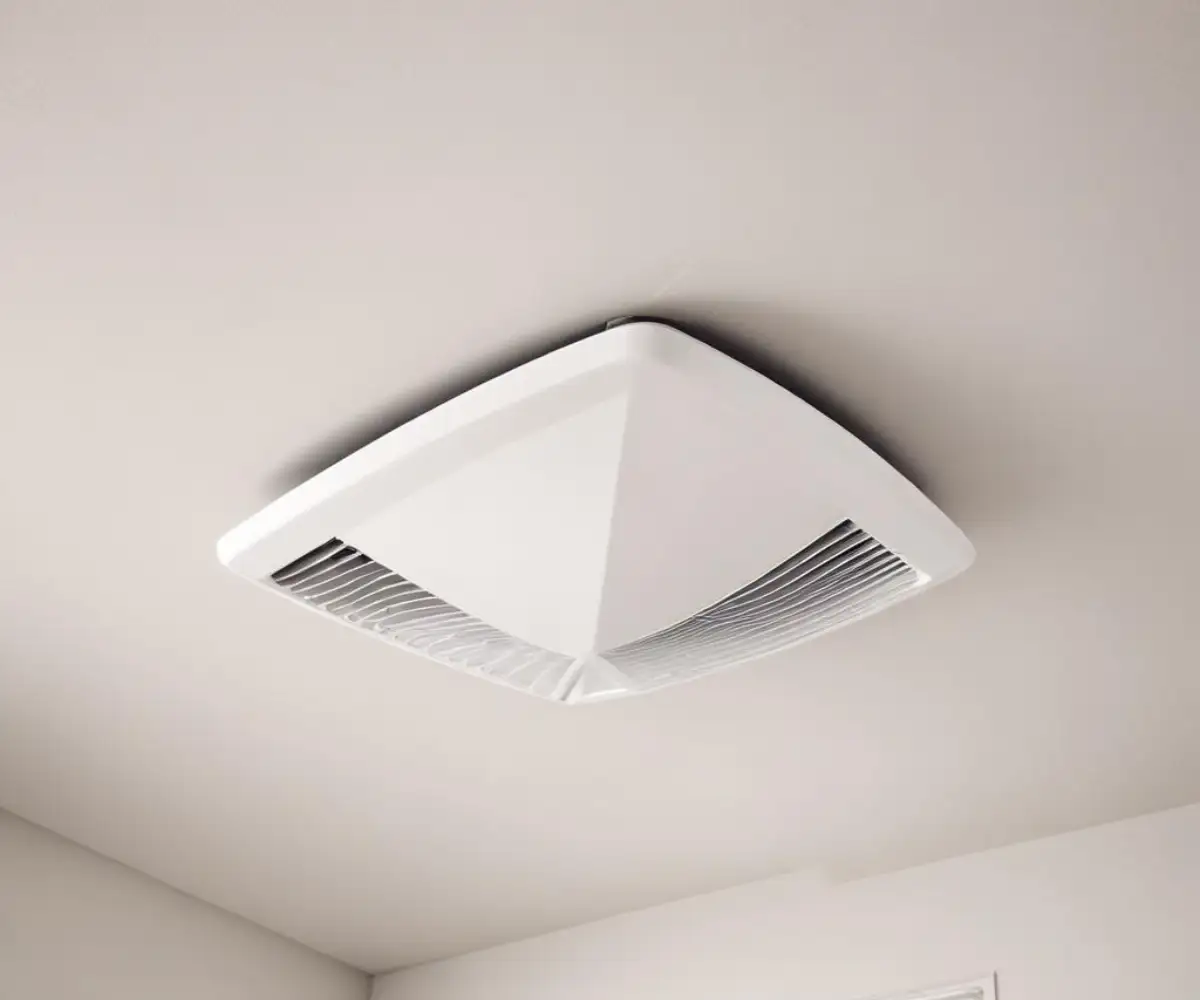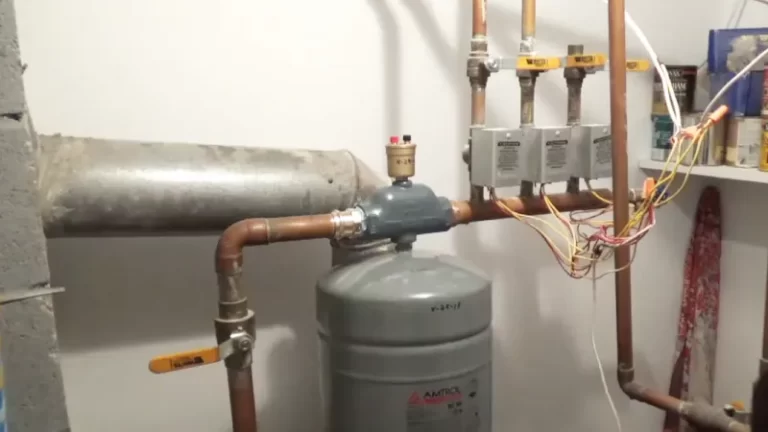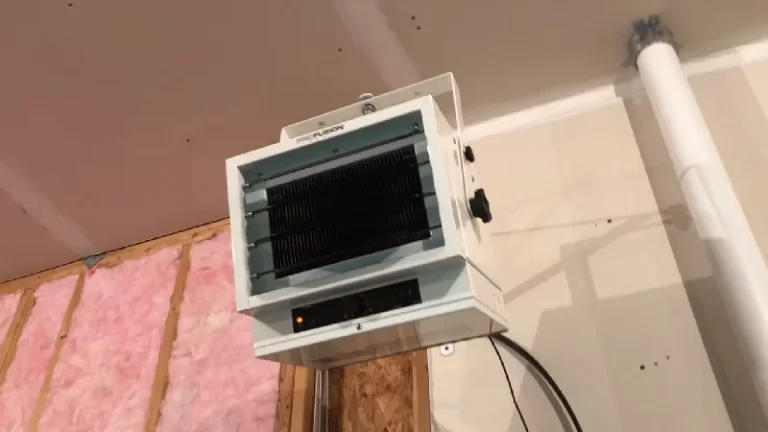Upstairs Exhaust Fan: The Secret Weapon to Slash AC Bills?
Does the upstairs of your home feel like a sauna in the summer? You’re not alone. It’s a frustratingly common problem where the second story becomes unbearably hot and stuffy, forcing your air conditioner to work overtime while providing little relief.
This oppressive heat isn’t just about discomfort; it’s a sign of a trapped thermal layer that drives up energy costs and degrades indoor air quality. The solution might be simpler and more powerful than you think: an upstairs exhaust fan.
You'll Learn About
Why Your Second Floor Becomes a Heat Trap
Understanding why your upstairs gets so hot is the first step to solving the problem. The primary culprit is a basic principle of physics known as the “stack effect.” Heat naturally rises, and in a multi-story home, all the warmth generated from cooking, electronics, and people on the main floor drifts upward.
This rising heat is compounded by solar gain, where sunlight relentlessly beats down on your roof, turning your attic into an oven. This intense heat radiates downward, effectively baking your top floor from above and creating a stagnant, uncomfortable environment that air conditioning struggles to overcome.
The Upstairs Exhaust Fan: Your Home’s Cooling Powerhouse
An upstairs exhaust fan, often referred to as a whole-house fan, is an incredibly effective ventilation system designed to combat this exact problem. Installed in the ceiling of your top floor, typically in a central hallway, this powerful fan works by pulling massive volumes of hot, stale air from your living spaces and pushing it into the attic.
This process creates negative pressure, which then pulls cooler, fresher air in through strategically opened windows on lower floors. The result is a refreshing, powerful breeze that can completely exchange the air in your home every three to four minutes, dramatically lowering the indoor temperature and improving air quality.
Types of Upstairs Exhaust Fans: Choosing the Right Solution
While often used interchangeably, different types of fans serve distinct purposes in cooling and ventilating your home’s upper levels. Understanding the differences is key to selecting the most effective and efficient option for your specific needs.
The Whole-House Fan: The Heavy-Duty Cooler
This is the true powerhouse of home cooling. Mounted in the ceiling between the living space and the attic, a whole-house fan is designed to move an immense volume of air, rapidly cooling your entire home. It’s an energy-saving champion, consuming up to 90% less energy than a traditional central air conditioner.
The main drawback is its reliance on cool outdoor air, making it most effective during evenings and nights when temperatures drop. It also requires you to open windows for it to function safely and effectively, which can be a concern for security or for those with severe allergies.
The Attic Ventilator (Attic Fan): The Unsung Hero
An attic fan focuses on tackling the source of the problem: the super-heated attic. Installed on the roof or in a gable wall, this fan’s sole job is to expel the scorching hot air from your attic space. This prevents heat from radiating down into your living areas, significantly reducing the workload on your air conditioner.
While it doesn’t create a direct breeze within your home like a whole-house fan, it makes your existing AC system more efficient. It is an excellent choice for homes in very hot climates where cooling the attic is a primary concern.
High-Capacity Local Exhaust Fans: Targeted Moisture and Heat Control
For specific problem areas like an upstairs laundry room or a steamy bathroom, a high-capacity exhaust fan is the ideal solution. These units are designed to quickly vent moisture, heat, and odors directly outside, preventing issues like mold and mildew.
Modern ventilation fans often come equipped with humidity sensors that automatically turn the fan on when moisture levels rise and off when the room is dry, providing effortless and energy-efficient protection. This targeted approach is perfect for maintaining air quality in rooms that generate significant heat and humidity.

Beyond Cooling: The Hidden Benefits You Can’t Ignore
While the immediate cooling effect is the main draw, an upstairs exhaust fan offers a host of other benefits that contribute to a healthier and more durable home. These advantages are often overlooked but provide significant long-term value.
Moisture, Mold, and Mildew Prevention
Moisture is a silent enemy in any home, especially in the attic and upper floors. An exhaust fan’s constant air circulation is one of the most effective ways to reduce humidity and prevent condensation. By expelling damp, stagnant air, you create an environment where mold and mildew cannot thrive.
This is crucial for protecting your home’s structure and your family’s health. In extreme cases, unaddressed attic moisture can contribute to serious issues over time, so proactive ventilation is key. Preventing the conditions that lead to rot and decay is a smart, long-term investment in your property’s integrity.
Vastly Improved Indoor Air Quality
Indoor air can be significantly more polluted than outdoor air, filled with dust, pet dander, volatile organic compounds (VOCs) from cleaning supplies, and other contaminants. A whole-house fan flushes out these pollutants, replacing stale indoor air with fresh outdoor air.
This continuous air exchange can dramatically improve your home’s breathability and reduce allergy symptoms for many sufferers. For issues like lingering cooking odors or smoke, an exhaust fan is exceptionally effective. It’s a powerful tool to stop smoke from going upstairs by actively pulling it out of the house rather than letting it circulate.
Protecting Your Home’s Structural Integrity
The intense heat that builds up in an attic doesn’t just make you uncomfortable; it can damage your house. Extreme temperatures can warp roof decking, cook the shingles from below, and degrade insulation over time. An attic or whole-house fan helps moderate these temperatures, extending the life of your roofing materials.
By keeping the attic cooler, you reduce the thermal stress on the entire roof assembly. This preventative measure helps maintain the structural health of your home’s most critical protective barrier, saving you from premature and costly repairs down the road.
Installation and Placement: Where Strategy Matters
Proper placement is critical to getting the most out of your upstairs exhaust fan. For a whole-house fan, the ideal location is in the ceiling of a central hallway on the top floor. This central position allows the fan to draw air evenly from all rooms, creating balanced and effective circulation throughout the home.
When it comes to installation, this is one job best left to the professionals. It involves cutting a large hole in your ceiling, securing a heavy piece of equipment between joists, and performing electrical wiring. A professional installer will ensure the fan is structurally sound, wired correctly, and that your attic has adequate ventilation to handle the powerful airflow, preventing dangerous backdrafting of combustion appliances.
Operating Your Fan for Maximum Efficiency
Using your upstairs exhaust fan correctly is key to maximizing its benefits and saving the most money. The golden rule is to only run the fan when the outdoor air is cooler than your indoor air. This typically occurs in the late evening, overnight, and early morning.
Before turning the fan on, make sure your air conditioning is off. Then, open several windows on your lower floors to create a clear path for the cool air to enter. You can strategically open certain windows to direct the breeze where you want it most, like through bedrooms for comfortable sleeping.
For a truly efficient system, consider drawing cool air from the lowest part of your home. A cool, dry basement can be a great source of refreshing air, which contributes to maintaining a clean basement apartment environment by promoting air circulation. By pulling this naturally chilled air upward, you enhance the cooling effect throughout the entire house.
| Fan Type | Primary Purpose | Best Use Case | Energy Efficiency | Installation Cost |
|---|---|---|---|---|
| Whole-House Fan | Whole-home cooling and ventilation | Climates with hot days and cool nights | Very High (uses 90% less energy than AC) | $900 – $2,400 |
| Attic Fan | Attic heat removal | Hot climates to reduce AC load | High (reduces AC runtime) | $300 – $700 |
| Local Exhaust Fan | Targeted moisture and odor removal | Bathrooms, laundry rooms, kitchens | Excellent (runs only when needed) | $150 – $500 |
Common Mistakes and Critical Safety Warnings
While powerful, an upstairs exhaust fan must be operated correctly to be safe and effective. The most critical mistake is forgetting to open windows before turning the fan on. This can create powerful negative pressure in the home, potentially causing a dangerous backdraft where exhaust fumes from gas appliances like your water heater or furnace are pulled back into the living space.
Another common error is running the fan and the air conditioner at the same time. This is a massive waste of energy, as you are actively pulling the conditioned air you just paid to cool right out of the house. Always ensure your AC is turned off before operating the fan.
Is an Upstairs Exhaust Fan the Right Choice for You?
An upstairs exhaust fan is a phenomenal investment for many homeowners, but it isn’t a universal solution. It is most effective in climates that have a significant temperature drop at night, allowing you to draw in genuinely cool air. Homes in dry climates benefit the most from this type of cooling.
However, if you live in a region with high humidity, a whole-house fan might not be the best primary cooling source, as it will pull that moisture into your home, potentially making it feel damp and clammy. Additionally, individuals with severe allergies to pollen or other outdoor airborne irritants should be cautious, as the fan will bring these elements inside. In these cases, using an attic fan to reduce the load on your AC might be a more suitable strategy.
Conclusion: A Breath of Fresh, Cool Air
An upstairs exhaust fan is more than just a fan; it’s a strategic ventilation system that can fundamentally change the comfort and efficiency of your home. By working with nature to flush out trapped heat and draw in cool, fresh air, it offers a powerful and cost-effective alternative to constant air conditioning.
From slashing your summer energy bills to improving your indoor air quality and even protecting your home’s structure, the benefits are substantial. If you’re tired of battling a hot, stuffy second floor, investing in an upstairs exhaust fan might be the single most effective upgrade you can make to reclaim your home from the oppressive summer heat.


